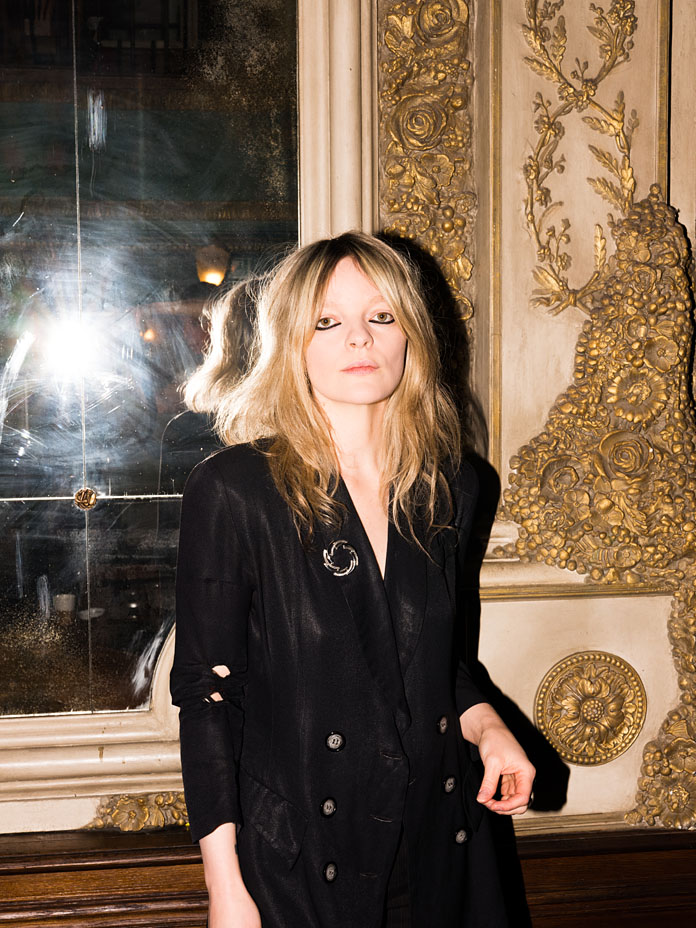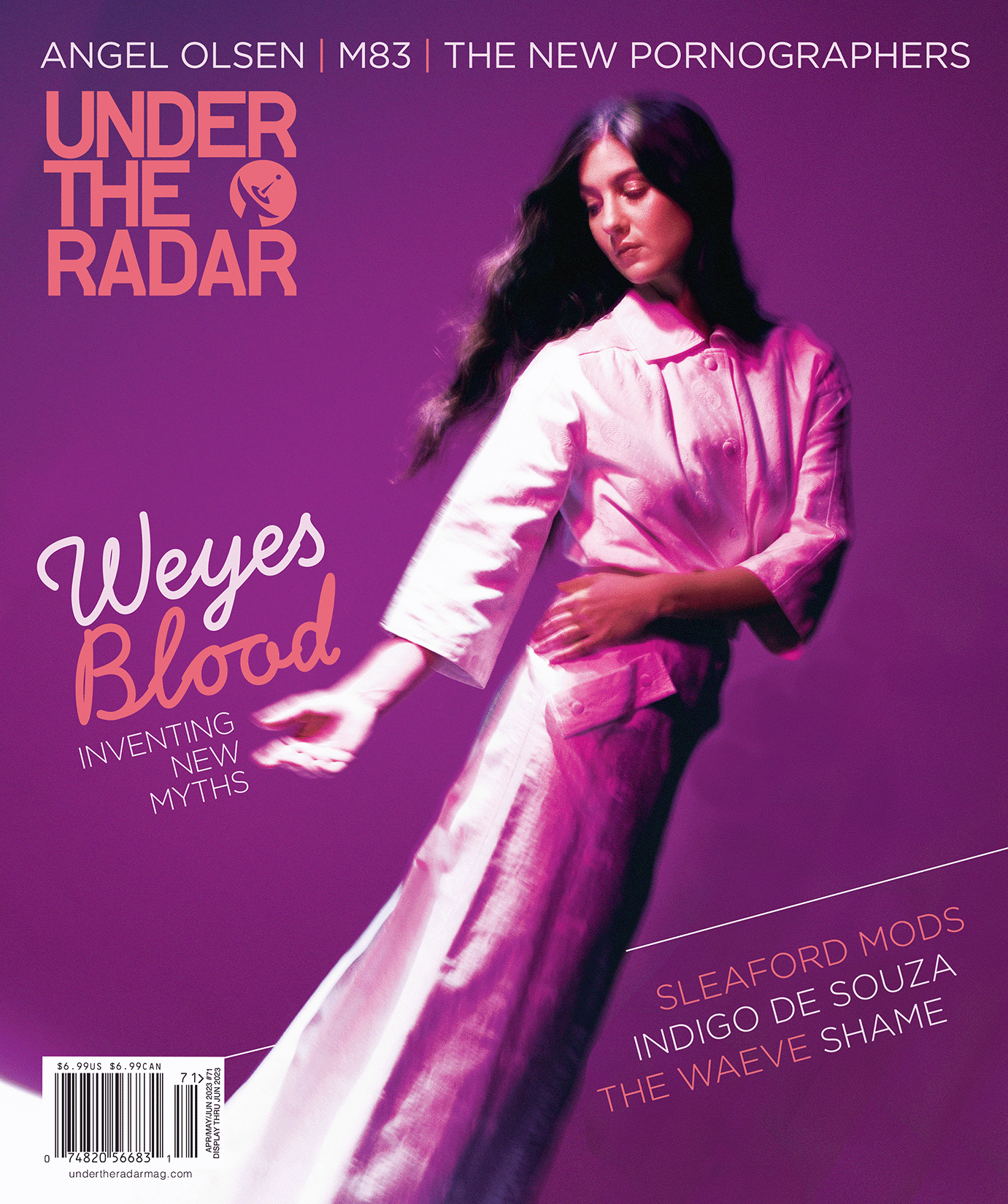
Jessica Pratt on “Quiet Signs”
Finding Herself in the Studio
Apr 09, 2019
Photography by Guillaume Belvez
Jessica Pratt
![]()
Jessica Pratt has released her first cohesive album. Yes, she has two acclaimed and internationally beloved full-lengths to her name already, but those were assemblies of largely self-produced tracks that were written and recorded across extended periods of time. Pratt’s new album, Quiet Signs, represents her first project that had a clear plan from its very inception.
“I knew from the second I started writing anything that it was all going towards this endeavour and that in the end it would all be part of one whole. I had never approached writing that way, and it was interesting,” she says.
“My first record was basically a collection of songs that I had recorded at different times that I didn’t intend to put out. And then half of the songs on the last record were things I just made when I felt like making music.”
The method of making Quiet Signs is a major break in tradition for the Los Angeles singer/songwriter, a change brought about in part by the significant amount of time that has passed since 2015’s On Your Own Love Again. That album’s release precipitated a 12-month global marathon tour, something Pratt now admits she would never do again.
“I was a bit mentally and physically exhausted,” she says. “I was also going through some personal things and they had worsened during that period of touring. There was a bit of convalescence that had to happen when I got back home. In 2016, I spent more time living my life than I had anticipated.”
The end product is her most beautiful and affecting music to date, a nine-song dream suite that emanates an intangible warmth that defies explanation. But after her self-imposed break, finding her rhythm didn’t necessarily come naturally. “I really did fall out of practice,” admits Pratt. “There were times when I thought, ‘I don’t know what I’m doing, what the fuck is this.’ I don’t think it will ever be as pressured as that again. On some level I was aware of a level of expectation, so that was an aspect of it too.”
Quiet Signs also marks Pratt’s first major foray into a professional recording atmosphere. “I was a little paranoid going into something with that much intention, worrying about how it would affect the spontaneous, mystical energy that happens when you play music.”
Received wisdom may suggest that the switch from home recording to studio would require some sacrifice in the intimacy that the former allows, something Pratt was adamant to avoid. “I was very wary of the typical evolution and the loss of warmth or magic that can happen when it’s a clinical atmosphere. I was very dogged about maintaining the warmth.” She goes as far as to admit that she now occasionally finds songs from her last album a little harsh, such is the tender richness of the atmosphere on Quiet Signs.
Her process of writing songs at home in Los Angeles and flying to Gary’s Electric studio in Brooklyn to record introduced an element of discipline, as well as a sense of collaboration, with both engineer/co-producer Al Carlson and mutli-instrumentalist (and Pratt’s romantic partner) Matt McDermott playing several parts on the album. “It was kind of a relief to collaborate for the first time and have it feel successful, because it was something I had been a little wary of,” she says. “Any new experience can be scary, but it ended up working wonderfully.”
When asked whether this is the now the formula she’ll stick to in the future, Pratt says she’s been asking herself the same question. “I certainly enjoy the ease of recording in a studio. It might be that I go back and forth between the two methods, and maybe another method too.”
She speaks of how she enjoyed taking advantage of the opportunities to explore different instrumentation that a professional studio allows for, with specific reference to the organ and flute parts that Carlson ended up playing. “It’s a bit of a toy store,” she says, both relieved and enthusiastic that nothing of her essence has been lost in the transition.
Like her previous albums, Quiet Signs is noteworthy too for its brevity, an increasingly rare and heroic gesture in an age where the infinite capacity of streaming services has been taken by many as a green light to forego self-editing. “The length of my records isn’t a statement, but I do think it’s a bit of a thing to make super long records these days,” she says. “My aim is to only include the music that I think is essential.”
The album is such a unified, trance-like whole that it is easy to float away with it, unobstructed by Pratt’s lyrics. Indeed her voice is such that her words have become somewhat well known for being difficult to decipher. It doesn’t overly concern Pratt, who admits, “I didn’t quite realize that it was a struggle for people until the last record. But even if someone’s singing in another language, the emotional impact is there and it doesn’t seem to hinder people.
“It’s always a balance for me between words that have deep meaning and suit the song but also that serve a phonetic and melodic purpose, and sometimes it’s a mind-bending task. I never want to distract anyone, that’s a real consideration for me. I want the song to be one gelled piece that you can swallow instantly and dissect later.”
The opening two tracks of the record, “Opening Night” and “As the World Turns,” share a melody that had been floating around Pratt’s mind for a couple of years before she even began writing this set of songs. “Typically I never [keep hold of older material], but unexpectedly I reworked those skeletal song fragments and they wound up being on the record. That’s something I definitely never thought would work for me, I definitely expanded my horizons this time!”
Opening Night is a haunting, fluttering piano piece played by McDermott and named after the cult 1977 film directed by John Cassavetes. Evidently Gena Rowlands’ performance as a struggling, anguished artist who is wrestling with personal demons struck a nerve with Pratt, but if Quiet Signs is the product of an artist in turmoil then you would never guess by listening to its mellifluous, enveloping embrace. Changes in recording process or not, Jessica Pratt has never sounded so complete.
[Note: This article originally appeared as a bonus article in the digital version (for tablets and smart phones) of Under the Radar’s Issue 65, which is out now. This is its debut online.]
www.jessicapratt.bandcamp.com/album/quiet-signs
www.facebook.com/jessicalynnpratt/
Support Under the Radar on Patreon.
Most Recent
- Fresh Shares New EP ‘Merch Girl’ (News) — Fresh
- Premiere: LOVECOLOR Shares New Video for “Crazy Love” (News) — LOVECOLOR
- Final Summer (Review) — Cloud Nothings
- Tallinn Music Week, Tallinn, Estonia, April 3-7, 2024 (Review) — Virta, Musta Huone, Mari Kalkun, Sven Grünberg
- Picnic at Hanging Rock [4K UHD] (Review) —


Comments
Submit your comment
April 10th 2019
3:48am
I love this woman very much…